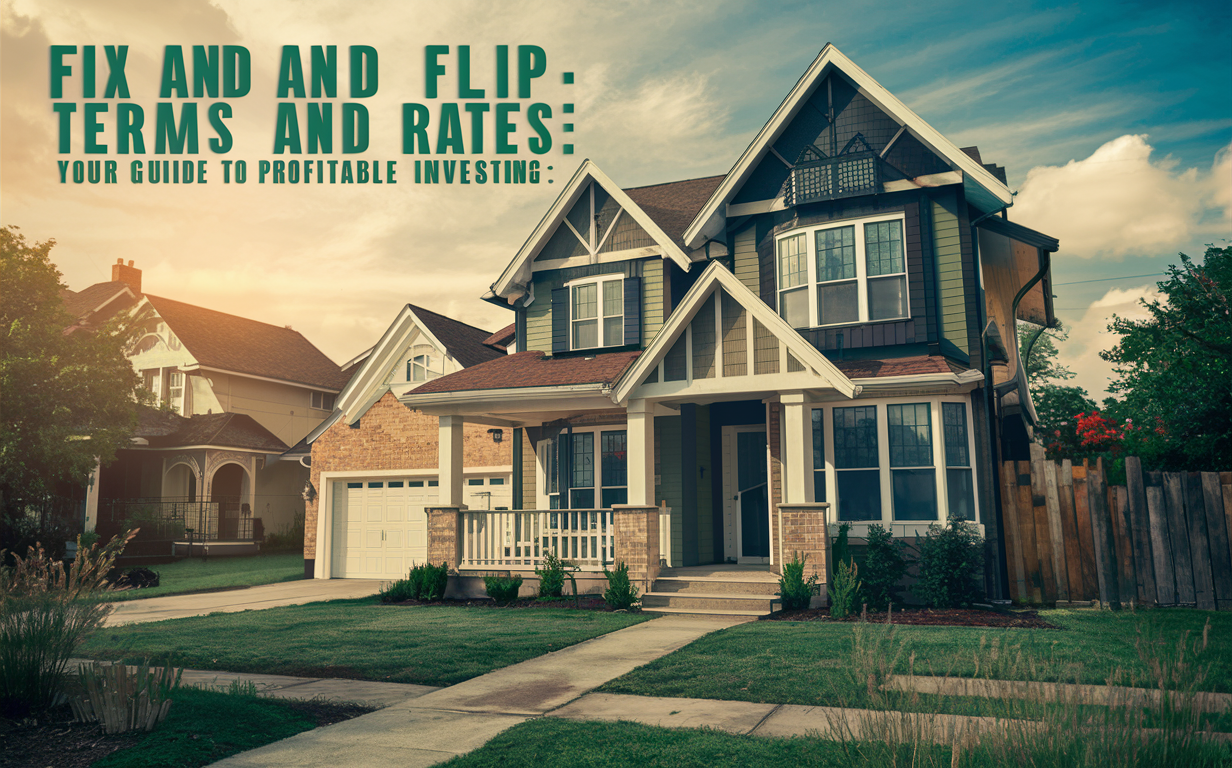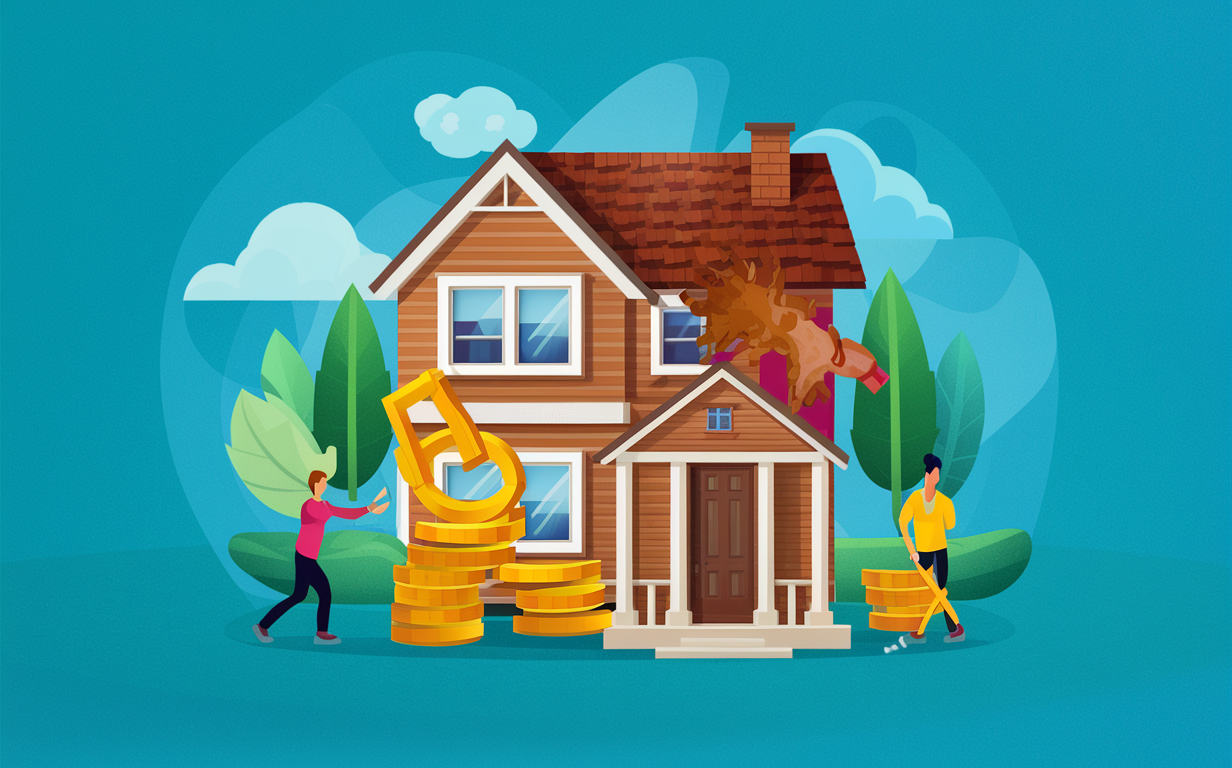
Fix and Flip Loan Terms and Rates: Your Guide to Profitable Investing
Are you ready to dive into the world of fix and flip investing? Understanding the terms and rates of fix and flip loans is crucial for making informed decisions and maximizing your profits. In this comprehensive guide, we'll explore the key aspects of fix and flip loan terms and rates, empowering you with the knowledge you need to succeed in this exciting real estate investment strategy.
Key Takeaways
- Fix and flip loans offer short-term financing for purchasing and renovating properties
- Interest rates for fix and flip loans are typically higher than traditional mortgages
- Loan terms are usually 6-18 months, with the option to extend for a fee
- Lenders often require a down payment of 10-20% of the purchase price
- Borrowers need to have a solid plan and budget for the renovation project
Understanding Fix and Flip Loans
Fix and flip loans are specialized financing options designed for real estate investors who want to purchase a property, renovate it, and sell it quickly for a profit. These loans are short-term, usually ranging from 6 to 18 months, and are intended to cover the costs of acquisition and renovation.
Unlike traditional mortgages, fix and flip loans are based on the after-repair value (ARV) of the property, which is an estimate of the property's value once the renovations are complete. This allows investors to borrow more money than they would with a conventional loan, giving them the capital they need to purchase and renovate the property.
Interest Rates for Fix and Flip Loans

One of the most important factors to consider when exploring fix and flip loan terms is the interest rate. Due to the short-term nature and higher risk associated with these loans, interest rates for fix and flip loans are typically higher than those of traditional mortgages.
Interest rates can vary depending on the lender, the borrower's experience, and the specific details of the project. On average, fix and flip loan rates range from 8% to 15%, although some lenders may offer rates as low as 6% or as high as 18%.
It's essential to shop around and compare rates from multiple lenders to find the most competitive option for your investment strategy. Keep in mind that the interest rate is just one piece of the puzzle; you'll also need to consider factors like loan origination fees, closing costs, and prepayment penalties.
Loan Terms and Repayment

Fix and flip loan terms are designed to align with the short-term nature of the investment strategy. Most loans have a term of 6 to 18 months, which gives investors enough time to complete the renovations and sell the property.
Some lenders may offer the option to extend the loan term for an additional fee, which can be helpful if the renovation takes longer than expected or if market conditions change. However, it's crucial to have a solid exit strategy in place and to work diligently to complete the project within the original loan term to avoid additional costs.
Repayment of fix and flip loans typically occurs when the property is sold, with the proceeds from the sale being used to pay off the loan balance, interest, and any associated fees. Some lenders may require monthly interest-only payments during the loan term, while others may allow the interest to accrue and be paid at the end of the term.
Down Payment and Loan-to-Value Requirements
Most fix and flip lenders require a down payment, which is a percentage of the purchase price that the borrower must contribute to the deal. Down payment requirements can vary, but they typically range from 10% to 20% of the purchase price.
The loan-to-value (LTV) ratio is another important factor to consider. This ratio represents the amount of the loan compared to the value of the property. For fix and flip loans, lenders often use the after-repair value (ARV) to calculate the LTV ratio, which allows investors to borrow more money than they would with a conventional loan.
LTV ratios for fix and flip loans typically range from 70% to 85% of the ARV, although some lenders may offer higher or lower ratios depending on the specific project and the borrower's experience.
| Lender | Interest Rates | Loan Terms | Down Payment |
|---|---|---|---|
| Lender A | 8.5% - 12% | 6-12 months | 10% |
| Lender B | 9% - 14% | 6-18 months | 15% |
| Lender C | 7.5% - 11% | 6-12 months | 20% |
Qualifying for a Fix and Flip Loan

To qualify for a fix and flip loan, borrowers typically need to have a solid plan for the renovation project, including a detailed scope of work and a realistic budget. Lenders will also consider factors like the borrower's experience, credit score, and financial stability.
Some lenders may require borrowers to have a certain level of experience in real estate investing or a minimum number of successful fix and flip projects under their belt. Others may be more lenient and willing to work with first-time investors who have a strong business plan and a clear understanding of the local real estate market.
It's important to be prepared when applying for a fix and flip loan. Gather all the necessary documentation, including proof of income, bank statements, and a detailed renovation plan, to streamline the application process and increase your chances of approval.
Choosing the Right Lender
When selecting a lender for your fix and flip project, it's essential to consider more than just the interest rate. Look for a lender who has experience working with real estate investors and understands the unique needs of fix and flip projects.
Some factors to consider when choosing a lender include:
- Reputation and customer reviews
- Flexibility in loan terms and repayment options
- Speed of approval and funding
- Level of customer support and communication
- Additional resources or education provided to borrowers
Taking the time to research and compare lenders can help you find the best fit for your investment strategy and ensure a smooth, successful fix and flip project.
Maximizing Your Profits

To maximize your profits from a fix and flip investment, it's crucial to have a solid plan and budget in place. This includes:
- Accurately estimating the costs of renovation
- Selecting the right property in a desirable location
- Completing the renovations on time and within budget
- Pricing the property competitively for a quick sale
By understanding the terms and rates of fix and flip loans and working with the right lender, you can access the capital you need to execute your plan and achieve your investment goals.
| Expense | Percentage of ARV |
|---|---|
| Purchase Price | 70% |
| Renovation Costs | 15% |
| Holding Costs | 5% |
| Selling Costs | 10% |
Conclusion
Fix and flip loans offer a powerful tool for real estate investors looking to capitalize on the potential for quick profits in the market. By understanding the terms and rates associated with these loans, you can make informed decisions and maximize your returns.
Remember to shop around for the best rates, choose a lender who understands your investment strategy, and have a solid plan in place for your renovation project. With the right knowledge and approach, fix and flip investing can be a lucrative and rewarding venture.